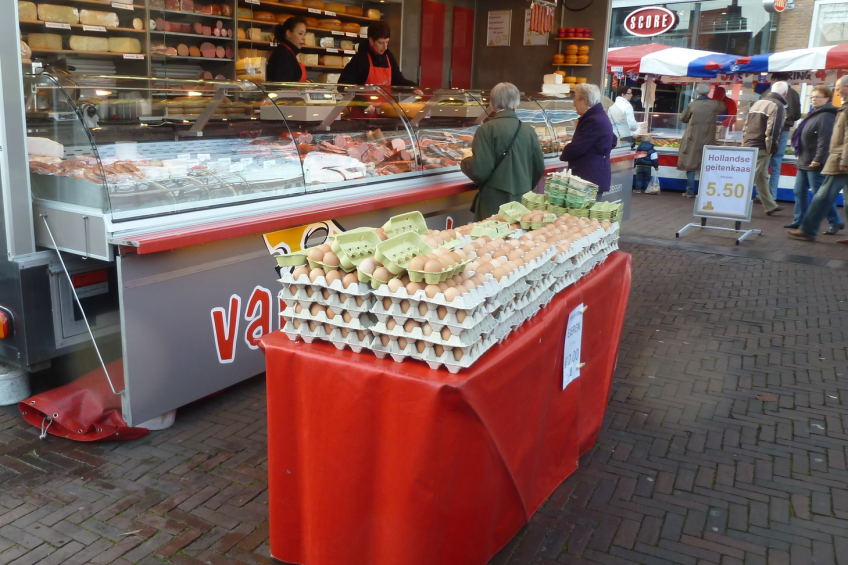The food safety and consumer demand puzzle

Food safety and consumer demands, dominate the scientific community where research on the quality of poultry meat, eggs and egg products is concerned. Responding to these demands however, proves to be more complicated than one would expect. That can be concluded from the presentations and posters presented at a WPSA symposium held in Bergamo, Italy 15-19 September 2013.
By Wiebe van der Sluis, Rooster 45, the Netherlands
Food safety is a simple demand, but the harsh reality tells us that meeting that demand is far more complicated than one would expect. Various NGO’s proclaim that “industrial production methods”, as they call it , are responsible for a major part of the food safety problems and that extensive production and outdoor rearing should be promoted. However the contrary could be closer to being true. French researcher Dr. C Jondreville made clear that the outdoor environment may contain a high quantity of persistent organic contaminants that may impair consumer health. Still, available data show that overall the chemical contaminants status of poultry products is satisfactory, although in some cases abnormal high concentrations of contaminants may be recorded. Jondreville expressed that the ingestion of soil, even moderately polluted, should be limited. The risk of product contamination will increase even more when producers opt for slow growing birds in free range conditions due to the combined effect of increased soil intake and degraded performance. Nevertheless, Dr. E N Sossidou, from Greece, sees advantages for birds reared in free-range systems. Meat from pasture-based poultry may contain some added nutritional benefits through lower fat content, as well as higher vitamin and mineral contents. At the same time, under good pasture management, bird health and welfare can be achieved.
Cage ban and dust problems
The ban on cages had a dramatic impact on the egg market in Europe as well as other countries around the world. Besides changes in trade flows, it also created a lot of problems that resulted from the change in production systems. Apart from new management techniques, producers have to deal with dust problems that impair their own health as well as that of their birds. This is a major drawback resulting from the implementation of the European Directive on the welfare of laying hens, said the French researcher Dr. A Huneau. She stated that high levels of respirable dust (particles, smaller than 10 micron) occur in the air of henhouses, especially in on-floor buildings and aviaries, rather than in caged buildings. The dust burden also tends to be higher in poultry houses with furnished cages than those with conventional cages. Although the average exposures measured during her study remained under the occupational threshold, over time this may be a cause of concern for a workers respiratory health.
Dust also remains a concern for poultry and public health since it is a perfect medium to carry disease causing micro-organisms. Another drawback from the cage ban is a decrease in egg shell quality and colour. Dr. Julia Roberts from Australia witnessed a loss of shell colour in birds that were kept in free range production. She could not find the cause, but concluded that vitamin D did not play a role and that relocation of these birds to cages resulted in rapid improvement of the shell colour and colour uniformity.
Salmonella and Campylobacter
The “Poultry meat and Egg Quality symposium” would not have been complete without several presentations on salmonella and campylobacter. Both remain high on the list of micro-organisms that have to be controlled. In meat, salmonella, thanks to precautious measures, is a lesser problem than campylobacter. Campylobacter seem to be intangible and requires more studies on where it comes from and how its appearance can be minimised. Meanwhile a range of studies provides a small part of a strategy to control the pathogen. Various measures can be taken at farm level to minimise the presence of campylobacter, but during processing the contamination level can suddenly increase again. Ewa Pacholewicz from the Netherlands, investigated what measures can be taken in the processing plant to reduce the campylobacter concentration in broiler chicken carcasses. She visited various plants and discovered that there are major differences in the reduction of campylobacter contamination between plants and stages within those plants. Further studies will lead to more concrete measures processors can take to further reduce the campylobacter counts.
Integrated prevention approach
Salmonella remains an important issue in egg production. Many salmonella serovars can be found in the environment of the laying hen, but Salmonella enteritidis (S.e). is by far the only serovar that can be recovered from eggs, says Prof. Dr. F van Immerseel, Belgium. Eggs are most likely contaminated with the bacteria during their formation in the reproductive tract. S.e. bacteria can be integrated into the egg white and are able to survive the antimicrobial actions of this matrix for several hours. Survival in this hostile and stressful setting requires unique mechanisms which remains to be defined. However evidence is being generated, showing that stress induced survival responses, antimicrobial resistance mechanisms against host peptides and cell wall characteristics are crucial elements, and require unique sets of genes and proteins. Therefore, Van Immerseel advised to adopt an integrated prevention approach, of which vaccination should take a central position, to control salmonella infections in layers and to prevent egg contamination.
Food safety assurance
Knowing that it is impossible to produce food without any form of contamination, the question remains when can food be declared safe. Dr. L Ellerbroek of the German Federal Institute for Risk Assessment tried to provide an answer. In his presentation “Implementation of indicators for biological hazards by meat inspection of poultry” he said that for any hazard there are maximum tolerance levels and that the main responsibility for food hygiene is assigned to the food business operator (FBO). To provide safe products these FBO’s should embrace an integrated food safety assurance system. A prerequisite for such an effective assurance system is the setting of measurable targets at the carcass and primary production level, said Ellerbroek. He suggests to follow the Food Safety Objective and Appropriate Level of Protection (FSO/ALOP) strategy, which describe the level of protection deemed necessary for the whole population. The system includes, in addition to the flock-specific markers, a risk categorisation of these flocks based on the use of pre-harvest farm information supported by historical data. High-risk poultry flocks can then be channelled to abattoirs or specific processing lines with high process hygiene. Although the responsibility is allocated to the FBO, the compliance is to be verified by the competent authority which operates on the basis of the risk analysis procedure as laid down by the Codex Alimentarius. Their metrics link food safety activities to public health via risk assessment and that should be a sound base for the production of safe food of high quality.
Join 31,000+ subscribers
Subscribe to our newsletter to stay updated about all the need-to-know content in the poultry sector, three times a week. Beheer
Beheer








 WP Admin
WP Admin  Bewerk bericht
Bewerk bericht